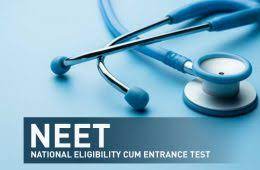
The NEET (Undergraduate) 2025 exam recorded its lowest attendance in four years, with the National Testing Agency (NTA) attributing the drop to strict verification protocols aimed at eliminating fake candidates. These safeguards were implemented right from the registration stage through to the conduct of the exam.
This year, approximately 22.7 lakh candidates registered for the medical and allied undergraduate entrance exam, but only about 20.8 lakh appeared, marking an attendance rate of 91.38%. The NTA noted that this figure might increase slightly as data from remote areas continues to come in.
In comparison, NEET (UG) 2024 saw a record attendance of 97.9% out of 24 lakh registered candidates, while the attendance in 2023 stood at 97.6%, the year registration first crossed the 20-lakh mark. In 2022, 94.2% of the 18.7 lakh registered candidates had appeared.
This year's exam was held under unprecedented security on Sunday, following extensive pre-exam drills at all centres to ensure operational preparedness. Security measures included mobile signal jammers, biometric authentication, enhanced frisking protocols, and multilayer monitoring systems. Police escorts were also deployed to ensure secure transportation of question papers from bank vaults to exam centres.
Among the states, Uttar Pradesh registered the highest number of candidates (over 3.3 lakh), followed by Maharashtra (over 2.4 lakh) and Rajasthan (over 2 lakh). In Jammu and Kashmir, more than 51,000 students appeared, while Assam had over 45,000 and Manipur recorded 10,198 candidates from the Northeast region.
The 2025 exam follows last year’s controversies, which included allegations of paper leaks and irregularities, making this year’s conduct a critical test of the NTA’s credibility.
To uphold the integrity of the examination process, a senior government official said the NTA adopted an integrated “whole-of-government” approach for real-time monitoring. This involved coordinated efforts from nodal Higher Education Institutions and district administrations.
Additionally, a centralized control room was set up under the Ministry of Education with officials from various ministries, including Health and Family Welfare, Defence, Electronics and IT, and Home Affairs. Local district authorities also carried out regular reviews of security protocols in the lead-up to the exam.